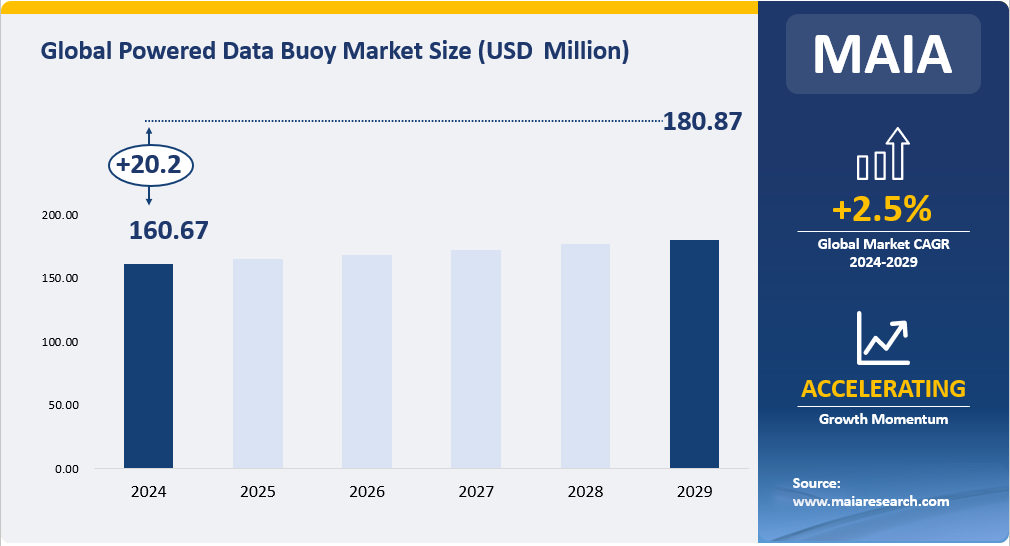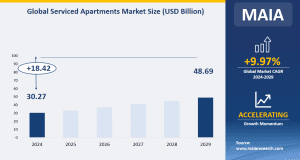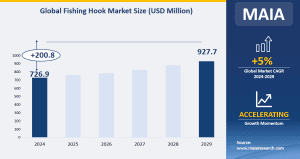In 2023, solar powered data buoy was more popular in the global market, occupying 73.73% of the revenue market share.

Definition
A powered data buoy is an autonomous device equipped with sensors and communication systems that collects and transmits real-time data from the ocean or other bodies of water.
Market by Type
Based on type, powered data buoy is divided into solar powered and battery powered.
Solar-powered data buoys are equipped with solar panels that capture sunlight and convert it into electrical energy. These buoys are ideal for regions with abundant sunlight, as they can operate continuously as long as they receive enough sunlight to charge their batteries.
Battery-powered data buoys rely on rechargeable batteries as their primary power source. These buoys are versatile and can operate in various environments, including locations with limited access to sunlight or during periods of low light conditions.
The following table shows the revenue market share of different types of powered data buoy.
|
Type |
Revenue Share in 2023 |
|
Solar Powered |
73.73% |
|
Battery Powered |
26.27% |
Powered Data Buoy Market Drivers Analysis
‘The deterioration of global climate conditions has prompted more environmental monitoring and climate research’
The Powered Data Buoy Market Driver related to increased environmental monitoring and climate research is underscored by the findings of the State of the Global Climate Report 2022. The State of the Global Climate Report 2022 notes that changes have occurred on a global scale on land, ocean, and atmosphere due to record levels of heat-trapping greenhouse gases. In terms of global temperature, despite the cooling effects of La Niña events over the past three years, 2015-2022 was the warmest eight years on record. Melting glaciers and rising sea levels reached record levels again in 2022, and this trend will continue for thousands of years.
Environmental issues occupied an unprecedentedly prominent position on the international stage, with organizations like the United Nations Environment Programme (UNEP) working to address global environmental crises. The UN Early Warning for All initiative’s goal to ensure universal access to early warning services underscores the need for improved observing networks and investments in meteorological, hydrological, and climate services capabilities. Powered data buoys contribute significantly to achieving these objectives by providing critical data for early warning systems and enhancing the ability to respond effectively to climate-related challenges on a global scale.
‘Deepwater oil and gas exploration activities increased’
21st century, and offshore oil and gas have become important strategic energy due to the depletion of onshore energy. Many countries conducted various research to accelerate the development and utilization of offshore resources. The development of the offshore oil and gas industry has undergone a long period and experienced a leaping breakthrough from coast to shallow water and deep-water. In addition, the production of offshore oil and gas has increased greatly.
The ocean area covers about 71% of the earth’s surface area, of which the offshore oil and gas resources account for more than one-third of the global oil and gas resources. However, only 30% of them are proven, which means the exploration of offshore oil and gas is still in the early stage. The offshore oil and gas industry includes activities related to exploring, mining, transporting, and processing offshore oil and natural gas. Due to the depletion of onshore oil and gas resources, exploring and developing offshore oil and gas have become an important strategy of various countries and regions. At present, more than 100 countries and regions have carried out offshore oil and gas exploration, and more than 50 countries and regions are conducting oil and gas exploration in deep-water. Deep-water oil and gas have made an increasing contribution to the reserves and production of global oil and gas, the deepwater field has become the most potential development direction of the global oil and gas exploration and development business.
In summary, the shift towards deepwater oil and gas exploration and the growing significance of offshore resources in the global energy landscape are key drivers for the adoption of powered data buoys, as they play a crucial role in monitoring and ensuring the success of deepwater projects.
Top Companies
The competition landscape of the powered data buoy market is relatively fragmented. Key players in the powered data buoy market include AXYS Technologies Inc., MetOcean telematics, JFC Manufacturing Co Ltd, Fendercare Marine, OSIL, NexSens Technology, Inc, Mobilis SAS, Aanderaa, OBSERVATOR, Develogic GmbH, Planet Ocean Ltd, IMBROS, etc. The top 3 companies accounted for approximately 15.31% of the revenue share in 2023.
|
Global Powered Data Buoy Revenue Share of Top 3 Players in 2023 | |
|
AXYS Technologies Inc. |
7.57% |
|
MetOcean telematics |
4.15% |
|
JFC Manufacturing Co Ltd |
3.59% |
Mergers & Acquisitions, Expansion
‘MetOcean Acquires OmniCom Solutions’
MetOcean Telematics has acquired Orolia’s OmniCom vessel management systems (VMS) and fleet management solutions (FMS). OmniCom is the next generation of trusted real-time fleet management technology designed to provide constant connectivity to customers, businesses, vessels, and crew while at sea. The acquisition includes the complete portfolio of OmniCom Global and OmniCom Vessel Monitoring System (VMS).
OmniCom’s range of products utilizes Iridium global satellite coverage to provide fleets with end-to-end visibility from ship-to-shore. OmniCom Global combines Iridium global satellite coverage and GSM 3G cellular coverage, with an automated least cost routing capability for reliable and cost-effective ship-to-shore communications. OmniCom’s VMS meets all NOAA VMS and GAR position and software reporting requirements that make it a complementary addition to MetOcean’s suite of vessel tracking solutions. MetOcean is pleased to offer OmniCom’s fleet management technology as we continue to ensure the success of our clients and meet their communications needs at sea.




